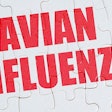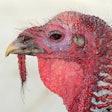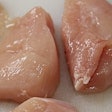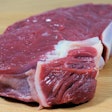
On October 31, 2017, a fire occurred at BASF’s citral plant in Ludwigshafen, Germany. Consequently, the company had to shut down the plant for its citral- and isoprenol-based aroma ingredients.
At that time, BASF’s vitamins A and E plants also shut down. The company will only be able to restart these plants once supply of citral is re-established and the corresponding intermediates for vitamins A and E become available.
The fire, caused by a technical equipment failure, started after a scheduled maintenance shutdown. According to a BASF website set up to inform customers of the fire and the rebuilding process, “The fire destroyed key electric components that are needed to steer production processes. There was only minor impact on structural components of the plant.” The company has employees working around the clock to efficiently clean and rebuild the damaged plant.
BASF will replace about 550 pieces of equipment and selected parts of 200 pipelines in the plant.
The plant is not expected to restart until March 2018 at the very earliest, the website said. Once rebuilding is complete, “BASF’s human and animal nutrition businesses (vitamin A, E, several carotenoids) are expected to be available several months after the startup of the citral plant.”
Why the shortage matters
According to Arnaud Bouxin, deputy secretary general for the European Feed Manufacturers' Federation (FEFAC): “The shortage in vitamins A and E supplies is critical, also due to a closure of a vitamin supplier in China because of environmental regulation."
Paul Davis, director of quality, animal food safety and education for the American Feed Industry Association (AFIA) explained that, “vitamin A is a fat-soluble vitamin, also identified as an antioxidant, that is essential for growth, health and life. More specifically, it promotes healthy eyesight/vision, reproduction, bone growth and epithelial integrity.” He further explained that animals have requirements for vitamin A and, although there are several sources of vitamin A, there is no substitute for it.
“Vitamin E has a broad physiological importance, such as maintaining tissue’s structural integrity, supporting neural growth, reproduction and modulating immunity,” Bouxin said.
Davis noted that not feeding the proper amount of vitamin A may result in decreased growth, decreased reproductive efficiency, rough hair/feathers, unsteady gait and impaired vision in animals. A long-term deficiency would likely cause cessation of growth and reproduction and eventually death.
“As an essential nutrient, animals should receive their required vitamin A daily. A larger, more mature animal with a typically longer life span would not likely exhibit symptoms of a deficiency after only a few days of deficiency. Conversely, a chick or piglet would begin to tell on insufficient vitamin A intake pretty quickly via exhibition of symptoms of deficiency,” he said.
FEFAC has formally informed its livestock farmer association counterpart that feed manufacturers globally expect to see an impact on the vitamin A and E inclusion rates in feed.
“Given that there are no direct alternatives, especially for vitamin A, and stocks are not sufficient to offset the deficit of production, the European Compound Feed Industry assures its customers that the sector is committed to not have the deficit in vitamins A and E supplies negatively affect animal health, welfare and performance, particularly for young and gestating animals,” Bouxin said.


















